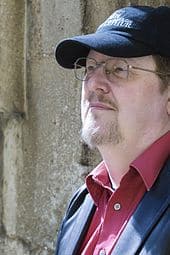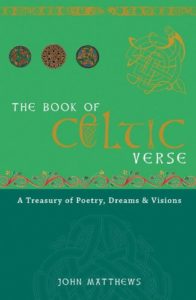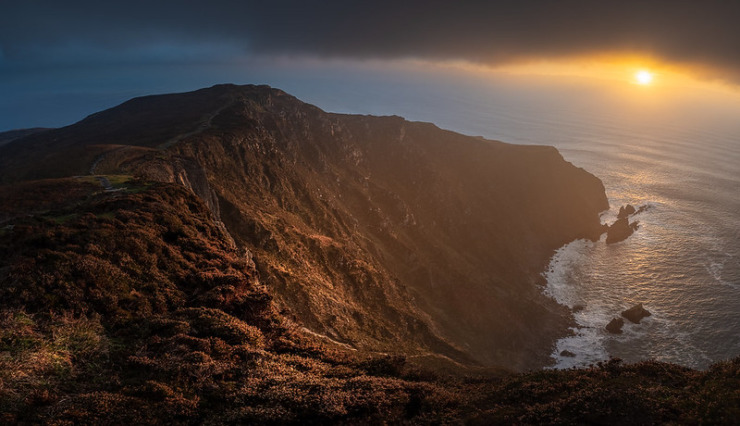John Matthews Edits a Diverse Collection of Celtic Poetry
Writer John Matthews has published more than 90 books on the history, culture, and literature of Britain. He’s written novels, short stories, poetry, children’s books, histories, and cultural studies. He’s especially well known for his works on King Arthur and the Holy Grail, and he’s often served as consultant for movies and television programs. With his wife, Caitlyn, he’s published numerous other works.
Matthews has previously studied Celtic literature, and he now is turning his publishing attention to Celtic poetry. The modern mind almost inevitably associates “Celt” with “Irish,” and for good historical reasons. But the Celts emerged as a group of tribes in central Europe, and at one time they occupied the geographies we know today as Romania, Hungary, Austria, southern Germany, France, Spain, Portugal, northern Italy, Belgium, Czech Republic, Slovakia, and Turkey, as well as the British Isles.

John Matthews
Today, Celtic heritage is most pronounced in Ireland, Scotland, Wales, Brittany in France, Cornwall, and the Isle of Man. And it is from those areas that Matthews draws the poems he’s collected in The Book of Celtic Verse: A Treasury of Poetry, Dreams, & Visions.
Matthews organizes the poems in five broad categories: Spells and Incantations; The High Dream of Nature; Lovers Under Leaf; Warriors and Warlords; and Voices of the Spirit. The time period covered stretches from the 20th century back more than 2,000 years, to the time when most poetry was oral. The poets are themselves a diverse lot — saints and sinners, warriors and dreamers, aristocrats and commoners. The collection includes poems by well-known poets and writers — Gerard Manley Hopkins, Oliver Goldsmith, Robert Louis Stevenson, Jonathan Swift — as well as long-forgotten names (“Anonymous” has the most poems). He includes one of his own poems, “Taliesin and the Lake of Vision,” and (diplomatically) four by his wife.
This poem is attributed to Fionn MacCumhail (also known as Finn McCool), the legendary Irish warrior who is said to have built the Giant’s Causeway during a battle with an arch-foe in Scotland. The poem dates to the 2nd or 3rd century B.C.
The Song of May

perfect season:
blackbirds sing
where the sun glows.
The hardy cuckoo calls
a welcome to noble Summer:
ends the bitter storms
that strip the trees of the wood.
Summer cuts the streams;
swift horses seek water;
the heather grows tall;
fair foliage flourishes.
The hawthorn sprouts;
smooth flows the ocean —
Summer causing it to sleep;
blossom covers the world…
The rue man sings
gladly in the bright day;
sings loudly of May —
fair-aspected season.
Underscoring the work that went into the volume, Matthews has a section on notes and sources, an index of first lines, and an index of authors and works. Reading the index of first lines is a poetic exercise by itself. One of the many that caught my eye was “At the hour of my birth I was older than men,” the first line of the poem “Merlin” by Phillip Clayton-Gore.
The Book of Celtic Verse is a delight to read and savor. It’s full of the richness of Celtic history and tradition. It’s not all-inclusive; the reader won’t find poems by Dylan Thomas, William Butler Yeats, or Seamus Heaney, for example. But it is a fascinating introduction to a diverse group of poets who fit comfortably together as “Celtic.”
Photo by Giuseppe Milo, Creative Commons, via Flickr. Post by Glynn Young.
How to Read a Poem uses images like the mouse, the hive, the switch (from the Billy Collins poem)—to guide readers into new ways of understanding poems. Anthology included.
“I require all our incoming poetry students—in the MFA I direct—to buy and read this book.”
—Jeanetta Calhoun Mish
- Ben Palpant Talks with 17 Poets About, Well, Poetry - April 1, 2025
- Poets and Poems: Forrest Gander and “Mojave Ghost” - March 27, 2025
- Poets and Poems: Siân Killingsworth and “Hiraeth” - March 25, 2025


Leave a Reply